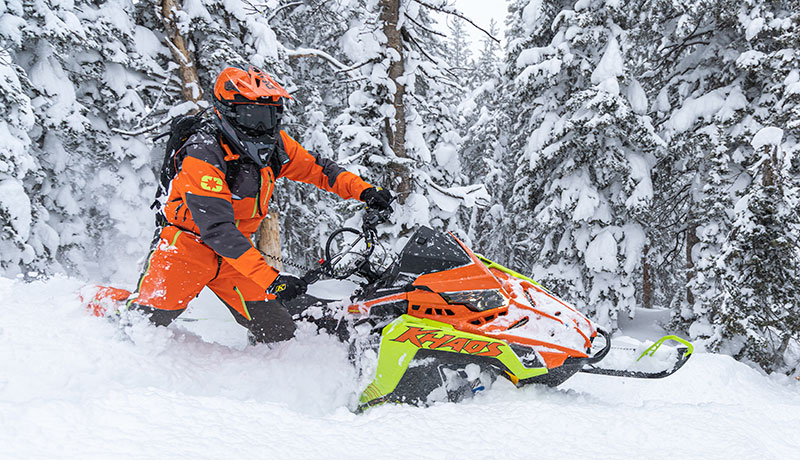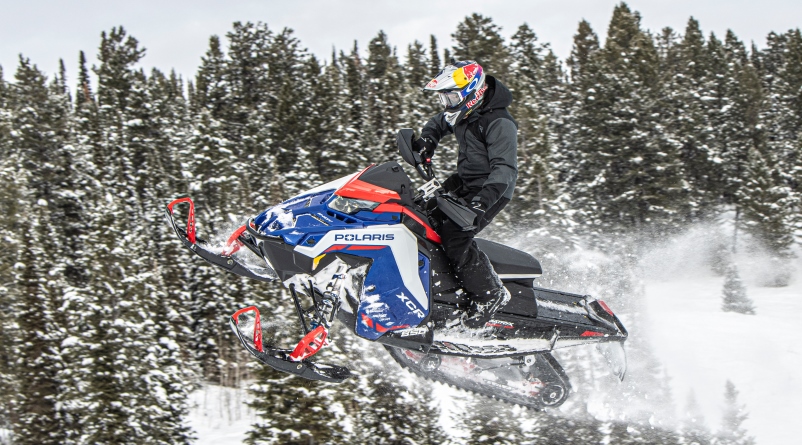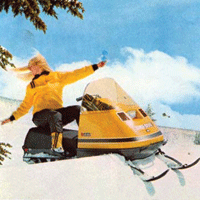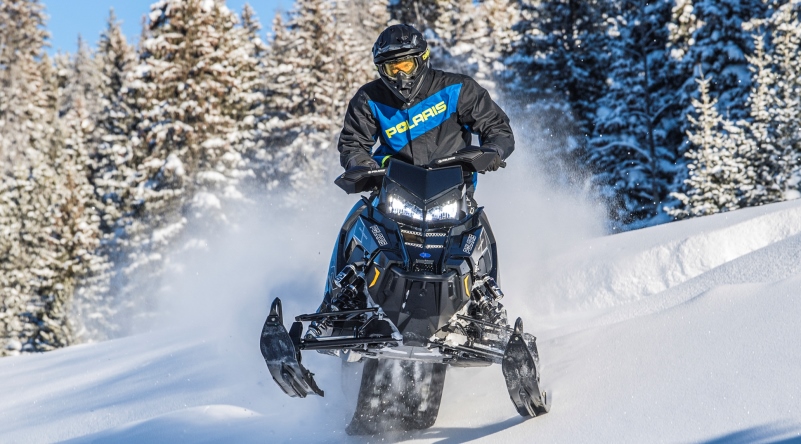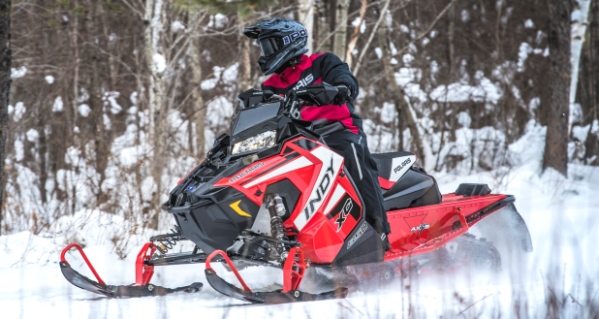
These machines aren’t the hero models. They’re not the glamour girls that usually grace magazine covers and wall art. And it’s a shame.
Base performance models often have a more devoted following. With more real-world accommodations such as functioning windshields and price tags a little less outlandish, we believe the two machines in this test will outsell the hero models even though they lack the premium manufacturer eye-candy.
Why? Because the Polaris 800 Rush and the Ski-Doo MX Z E-TEC 800R TNT have a wider appeal in terms of ride quality and comfort. There aren’t many people who truly need racetrack-inspired shock calibrations. Both of these machines are plenty high-tech and plenty capable, providing as much fun and absorbing the same abuse as top performance packages with little consequence. Fact is, few people need the high-end adjustable shocks and even fewer people take the time to correctly set up their own sled.
The MX Z is strengthened this year with the addition of the E-TEC engine to the big-bore class. The Rush was only available last year as a 600 model and now expands to a platform of five models including the two engine choices: a 600 Rush and 600 Rush Pro-R, 800 Rush and 800 Pro-R and the 600 Rush LX.
Either one of these base machines fits a wider customer base than their higher-end, more expensive hero choice that tempts a sign-and-drive impulse purchase, but slow down and take a second look at the machines that aren’t on the cover of the brochure. If this was a relationship, these machines are the marrying kind.

2011 Polaris 800 Rush – $10,999
Polaris’ Pro Ride chassis, after a year on the snow, has expanded to include models above and below the standard Rush. Not Pro-R, not LX — the base model is a carry-over from last year, but not without its updates. Different from last year’s debut 600 Rush is a larger cooling area in the rear for the 800 model. Also, a new rail profile produces a quieter ride and a higher top speed, according to its engineers.
While the factory promised a cleaner-burning, better-running Cleanfire 8, during our ride on the pre-production model the engine was soggy on the very bottom, but represented well with a strong midrange. It had a steady pull, but we believe further testing by Polaris after our ride would dial in the calibrations and mapping.
The Polaris Cleanfires haven’t earned a reputation for good fuel consumption, usually performing poorest in this category of growing importance. The Rush achieved a respectable 12.4 mpg — about 2 mpg better than we expected, but we aren’t positive we felt the true engine potential with all the updates.

One driver compared the larger displacement version to last season’s Snowmobile of the Year. “I spent more time on a 600 Rush [last] winter than on any other sled and the 800 Rush is clearly much punchier than the 600, but surprisingly similar in character with the exact same sound and feel,” he said.
While both the Rush and the Ski-Doo perform best when drivers lean aggressively, the MX Z is more forgiving if driven casually. The Rush needs weight over the inside ski to help it grip and turn to its fullest potential without inside ski lift. In loose snow conditions, even an aggressive forward, downward lean wasn’t enough to keep a slight corner push at bay — until we made a small setup change.
Stiffening the rear preload two turns sharpened the handling, giving us another firm reminder that the Rush is setup sensitive. The funky rear arm, badged as the sport’s first truly progressive rear suspension, does amazing things to make holes disappear and keep the machine level. Up front, the spring rate was heavy, causing the nose to bounce skyward if catching an ill-timed large bump on the rebound stroke. In normal trail chatter, however, the front end was never surprised with how to handle the next bump.
There are many of us who remember the handling and enjoyment of Polaris models from past decades who think the naming was missed. While a rush to ride, with purposeful design cues of brand heritage and a pleasant handling and suspension package, we’d find even more delight in this model if it were called an Indy.

2011 Ski-Doo MX Z E-TEC 800R TNT
We admit it — the X package looks better in pictures. While the X model seems to get more attention for its flashier appearance and showroom appeal, the TNT package is what most riders will find in dealers mid-season. Instead of its star-billing visual appeal, the TNT has a wider audience for which the machine will find happy customers.
The first source of happiness is the run quality of the new E-TEC 800R. The E-TEC 800R run quality is every bit as smooth and responsive as the 600 version — with a market conditioned to the smaller block, nothing less would have been acceptable. The immediate response isn’t its only attribute. The big-bore E-TEC is going to battle well-armed for winning the horsepower war. The factory claims 155-plus horsepower, but independent, third-party tests are putting it in the same low 160s ballpark as Cat’s thrusty and thirsty H.O. 800.
Ski-Doo claims its E-TEC 800 is capable of 19 mpg. We ran the machine hard in search for its limits and handling shortcomings at all speeds. Though we observed 14.1 mpg — an impressive number for a large bore — we know higher numbers are attainable with a more conservative thumb.
The MX Z TNT is a benchmark for lightweight handling but there is minor fidgeting. When riding far forward against the sculpted tank, the front stays planted, though it scrubs outside occasionally with a mid-corner bump. The sway bar is stiff enough so that a mid-corner bump lifts both skis, albeit briefly. It’s a compromise for flatter cornering that Ski-Doo Product Manager Pascal Vincent summed as, “We choose to have the BMW instead of the Buick.”

In terms of suspension performance, its only demerit is a soft front torque arm with the stock setting. We bottomed frequently, and our drivers were not overly heavy men — 195 and 210 pounds — until we turned up the torsion spring settings. It mitigated the bottoming on the front arm on the medium setting, enough to convince us that only people both large and aggressive may want to opt for higher-rate rear suspension springs. With the lightweight XP chassis, a little adjustment makes a big influence.
Even though packaging is more subtle than an X model, the driver feels just as compelled to be active behind the bars. One driver felt more in control on the MX Z TNT than on any other machine he’s ever driven, feeling like the machine is never out of its comfort zone. Brakes are adequate, but not as stout as what is on the Rush.
The sum of the parts? Two drivers said it was the best stock sled they had ever driven.

